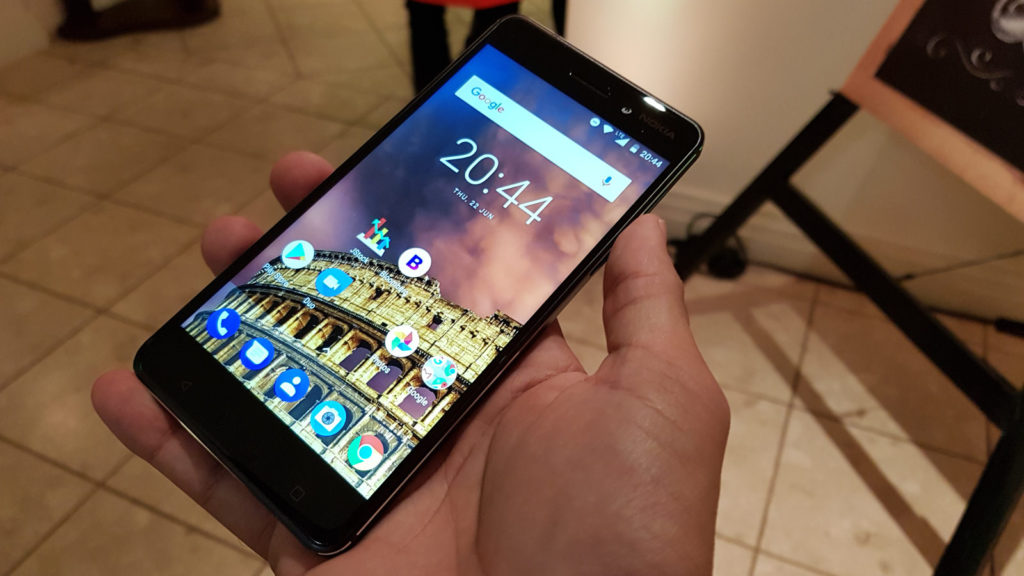The story of 2017 has really been one of phoenixes (phoenixii, phoenii?) rising from the ashes, as both the Nokia and BlackBerry brands are back on the market.
Nokia, coming back courtesy of HMD Global, has already seen three smartphones launch, in the form of the Nokia 3, Nokia 5 and Nokia 6. Meanwhile, the BlackBerry name has been used by TCL Communications in order to launch the BlackBerry KeyOne smartphone earlier this year.
No ad to show here.
Who is actually poised to emerge the winner though?
Nokia’s smartphones are still slowly making their way around the world, but it’s clear they seem to be hitting the right notes so far. Capable specs? Cheap price tags? Solid design? Yep, HMD’s first devices as part of the deal are certainly ticking all the correct boxes at this stage.
However, the same things could be said for Xiaomi and Huawei, delivering cheap, attractive phones in a pleasant form factor. The Android market is filled with manufacturers offering these propositions — so how will HMD stand out?
Read more: 7 really cheap smartphones for WhatsApp
The company’s announcement of a Carl Zeiss partnership for camera hardware and the acquisition of more patents from Microsoft/Nokia certainly implies that the upstart firm knows why people bought Nokia devices in the first place. The coming launch of the Nokia 8 will be another litmus test then.
Meanwhile, the BlackBerry/TCL arrangement is still in its infancy as well, with the KeyOne being the most high profile product thus far. The phone seems like a product from the real BlackBerry though, owing to its physical keyboard, BlackBerry software (such as the Hub) and privacy/security focus.
Both brands have also jumped on the largely stock Android bandwagon, eschewing unpopular third tier operating systems in favour of the world’s most successful mobile platform. And both brands have made promises related to updates, but then again, the proof is in the pudding.
Emerging market battlegrounds
One of the biggest battles will take place in developing markets, with the likes of India, Indonesia, the Philippines and South Africa (and the rest of the continent) being traditional strongholds for both brands over the years.
The TCL/BlackBerry partnership hasn’t seen any budget smartphones just yet (the KeyOne costs over R9000 from Cellucity), being an integral part of any strategy to conquer these markets. Nokia’s first phones, on the other hand, fit the bill to a tee.
It’s too early to call Nokia’s mid-range devices a success and HMD is indeed readying a flagship device (Nokia 8), but it’s an encouraging start. TCL/BlackBerry can’t afford to ignore this segment of the market though. After all, the iconic BlackBerry Curve 8520 was the most popular BlackBerry phone in South Africa, coming in far below R3000.
Nokia and BlackBerry are back in 2017, but who will actually be victorious?
The other X-factor is BIS, being the biggest reason, along with BBM, why many BlackBerry owners stuck with their phones for as long as they did. Let’s be honest: it’s not coming back (at least to South Africa) and I’ll bet on it. This immediately puts the TCL/BlackBerry arrangement on the back foot compared to the original BlackBerry devices, whether they like to admit it or not.
Another, more general strike against the BlackBerry brand at this point is software. You can pretty much buy any Android smartphone and download some of their BlackBerry services, such as the Hub, calendar, launcher and password manager. You’re only really left with the software keyboard and DTEK security suite as truly exclusive. HMD, on the other hand, is taking the spartan route, sticking to Google apps and only really offering a tweaked camera app.
The BlackBerry phones do have another strength in security/privacy though, but phones with privacy as the main selling-point aren’t doing too well in the mass market — at least if you look at Silent Circle’s BlackPhone range. In fact, Silent Circle has opted to become a software company, with BlackBerry proper also taking the software route.
It’s too early to say who will win then, if you can call gaining a little marketshare and becoming a solid mid-tier player (in the short and medium term) winning.
But the new custodians of these brands will need to show a keen understanding of why people wanted the brands’ phones in the first place. And while flagships are indeed an important part of the equation (to drive innovation and give you notable profit margins), the meat of your strategy will be in gaining mass market traction and loyalty through budget devices. And at this very early stage, Nokia/HMD seems to have the better start.
